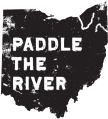The Cuyahoga River

The Cuyahoga River
A river of international renown – though not always for the best of reasons – the Cuyahoga is a key feature of Northeast Ohio. Nicknamed the Burning River for the infamous incidents of the mid-20th century when it had become so polluted it literally caught fire on several occasions, today the waterway has been lovingly restored to much of its natural state.

Once again, the river is a haven for wildlife – fish, birds, amphibians, reptiles, mammals, insects and mollusks, as well as trees, flowers and plants of many varieties. Huge amounts of work and money has been spent to clean up the river and allow nature to take control once more of this magnificent waterway. And today, not only has nature reclaimed this tract of water but we can enjoy it as well – whether we are walkers or anglers – or enjoy kayaking its eddies and flows.
Paddle The River now has two routes on the Cuyahoga – and another in the Mahoning Valley – where the summer months can be spent enjoying life on the water. The river itself begins in Geauga County, where several smaller streams converge together to form the Cuyahoga, which meanders through several Northeast Ohio counties – including Summit – for more than 100 miles before entering Lake Erie in Cleveland, though its mouth is just 30 miles from its headwaters origins as the crow files. Its route takes it southwesterly into Portage County, then flows into Summit just north of Akron, then continues north through the Cuyahoga Valley National Park – and its breathtaking scenery – before ending its run in the Great Lake, and the watershed drains from six counties in total.
Altogether, the Cuyahoga River drains 809 square miles of Northeastern Ohio, and includes 26 sub watersheds from creeks, streams and rivers that contribute to the Cuyahoga River. The river continues to regain its original splendor as work continues to remove remains of our industrial past that hampered the free-flowing waters that were experienced by generations of native American peoples and the early settlers.
Many dams have already been removed, such as in Munroe Falls, which let Paddle The River come into being for everyone to experience the waterway for themselves. Already, competition kayaking has returned to the area as the long-hidden rapids have re-emerged. And with work continuing on plans to remove the last large impediment – the famous Gorge Dam in Cuyahoga Falls – it is hoped there will soon be a long and world class stretch of kayak whitewater available for people to enjoy.

While the hard winter months of Northeast Ohio may not be the ideal time to take to the water, it is perfect to enjoy walks along the Cuyahoga’s banks – and think on to the warm summer months when you too could be on the water. Visit www.paddletheriver.com now to find out more and buy a season pass.
